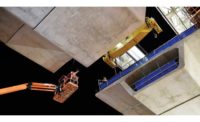The year 2020 provided a bumpy budgetary ride for all modes of transportation, and some industry insiders don’t expect airport and transit ridership to return to pre-pandemic levels for years. Agencies are taking lessons learned, coupled with hopes for the new Biden administration, to carry on as best they can.
James H. Burnley IV, former U.S. Secretary of Transportation and a partner with Venable LLP, says the need to reform the Highway Trust Fund is clearer than ever, and he expresses hope that the incoming administration might embrace alternatives including vehicle miles traveled (VMT) to fund transportation. Pete Buttigieg, the nominee for U.S. Transportation Secretary, will probably be a “quick study” for the job, Burnley adds.
“He endorses the VMT—that has to be the answer,” says Burnley. “With the push to try to accelerate the adoption of electric vehicles, that makes it all the more important to start working on transition to VMT.”
While the industry waits and sees what the new administration can and will do, agencies have adapted to the current reality. Shelter-in-place mandates and slowed economies sharply curtailed traffic volume and with it, revenue from fuel taxes and other sources that help fund road and bridge construction. While a handful of states imposed temporary halts to all but emergency work, most relied on hiring freezes and cuts in administrative and discretionary spending to keep capital programs moving.
Some agencies such as the Kansas Dept. of Transportation saw record levels in commercial traffic that helped offset an early-year decline in fuel tax revenue. “Sales tax receipts and registration fees—two key KDOT funding sources—have seen modest increases,” says Julie Lorenz, state DOT secretary, adding that the funding stability enabled the agency to add $1.6 billion of new expansion and modernization projects to its development pipeline.
Applying the lemons-to-lemonade analogy, many states used the lighter traffic volumes to accelerate road and bridge maintenance projects, making work zones safer and less congested in the process. Fears that the scheduled summertime Alemany Circle deck replacement on US Route 101 in San Francisco would spawn a “carmegeddon” were averted when Caltrans and contractor Myers & Son Construction got a three-month head start.
Indiana was likewise able to implement staggered closures of I-70’s eastbound and westbound lanes for a major upgrade through downtown Indianapolis. Florida fast-forwarded $2.1 billion worth of road work, including an $802-million reconstruction of I-395/SR 836/I-95 in Miami.
“Some [Michigan DOT] projects may have to be pushed into later years.”
– Jeff Cranston, MDOT Spokesman, Regarding The Agency’s Reduction in Capital Budget
Though nationwide traffic volumes are now back within single-digit differences of 2019 levels, DOTs are nevertheless reconciling themselves to some difficult years ahead.
Despite being in a relatively a strong financial position entering 2020, Virginia DOT’s initial COVID-constrained revenue assumptions projected a $400-million falloff in fiscal year 2021, with a somewhat smaller shortfall the following year.
Spokeswoman Emily Wade notes that better-than-expected revenue collections in October could mitigate that forecast, while a budget amendment passed during a special legislative session provides the state’s Commonwealth Transportation Board added flexibility to address revenue reductions. The cash management strategy “allows transportation construction projects to proceed on time and on schedule,” Wade adds.
Michigan DOT is in the process of revising its five-year plan for capital projects, including addressing a $73-million reduction in its FY2021 appropriation for road and bridge capital programs
“Some projects may have to be pushed into later years,” notes MDOT spokesman Jeff Cranson, adding that the agency is moving forward with a $3.5-billion infrastructure bonding plan that will finance rebuilding the state’s key freeways. MDOT closed on the first $800 million in bonds in September, with the remainder to be sold over the next few years.
Some states and localities received a transportation funding boost at the ballot box in November. Arkansas voters approved a permanent 0.5% statewide transportation sales tax, while bond measures from Seattle to Charlotte notched victories. Election results were mixed, however. Funding for Austin’s $7.1-billion Project Connect transit program won by a wide margin. But a controversial proposed payroll tax on private employers contributed to the sound defeat of Portland, Ore.’s $7-billion multimodal transportation program, which included an 11-mile light rail extension. The city’s leaders have shelved plans to bring another package before voters until at least 2022.
Public-private partnerships were not immune from the pandemic’s effects. The proposed $8-billion Brightline West Las Vegas-Southern California rail project was postponed indefinitely due to a disappointing September bond sale. Other transportation P3s garnered unwanted headlines, with long-running cost disputes between Maryland and its development team for the $2-billion Purple Line resulting in the departure of Fluor as an investment partner and a search for a new design-build team to finish the half-completed light rail project. Honolulu officials abandoned a proposed P3 to complete its long-delayed light rail system after bids exceeded budget estimates by more than $1 billion.
Chuck Wall, co-chair of infrastructure and public-private partnerships teams for Seyfarth Shaw LLP, says there is still a future for transportation P3s, including in transit. “Massive amounts of capital [are] ready to be deployed,” he says. “There are lessons to be taken away from these projects. One thing that we’re learning is some owners want to break them up into smaller, more digestible pieces.”
Bad publicity has not tarnished the P3 model, according to Jonathan L. Gifford director of George Mason University’s Center for Transportation Public-
Private Partnership Policy.
“The fundamentals that make P3s attractive remain compelling for some projects: better life cycle management, accelerated project delivery, adherence to budget and schedule and overall value for money,” Gifford says. He adds that opportunities to bundle projects into programs, such as Pennsylvania’s 558-structure Rapid Bridge Replacement Project, expands the applicable range of assets for P3s. “Those fundamentals may be increasingly attractive to states facing depressed tax revenues and budget pressures from pension and retiree obligations,” Gifford says.
Holding Pattern
Getting airport passenger levels—and related funding—back to normal may take more than five years as the workforce has become accustomed to working virtually, says Carol Lurie, regional aviation director with VHB. While airports, like DOTs, have taken advantage of lower traffic to accelerate current construction, many major capital plans are on hold.
“Good master planning forecasts should still consider the demand 20 years out,” she says. “The mid- to long-term focus should be on saving costs overall and increasing the return on investment through better sustainability planning, more efficient passenger processing and an in-depth focus on increasing concession revenues and non-aeronautical revenues.” She adds that designers will need to consider post-pandemic, contactless technologies within terminals.
Since overall construction costs are expected to decline 2% to 5% this year, pushing forward with smaller projects could be advantageous, says Tom Rossbach, director of aviation architecture with HNTB, citing San Diego airport’s decision to move forward with a $1-billion terminal replacement. “When the project is a replacement, or a modest capacity-enhancing project, now is the time to start, if they want to get the best price.”







Post a comment to this article
Report Abusive Comment